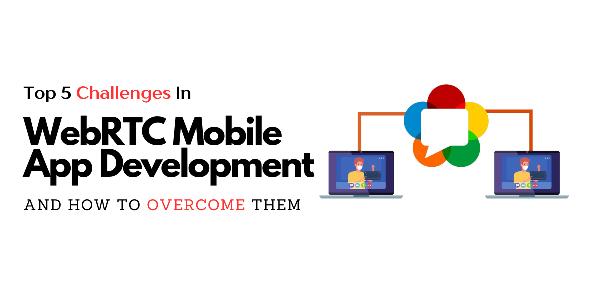Challenges in WebRTC Mobile App Development and How to Overcome Them

Strong 8k brings an ultra-HD IPTV experience to your living room and your pocket.
Web Real-Time Communication (WebRTC) is revolutionizing the way we interact online, particularly in mobile app development. By enabling peer-to-peer connections for video, voice, and data sharing, WebRTC has opened new horizons for mobile applications. However, WebRTC Mobile App Development presents several unique challenges. In this article, we’ll explore the top five challenges in WebRTC mobile app development and how to overcome them.
✍️ Maintaining apps after launch is just as important as building them. Learn how app maintenance practices ensure security, updates, and long-term success.
1. Device Compatibility and Fragmentation
Challenge:
One of the most significant challenges in developing WebRTC mobile apps is ensuring compatibility across a wide range of devices and operating systems. Android and iOS devices have different hardware capabilities and software environments, leading to potential issues in performance and functionality.
Solution:
- Cross-Platform Frameworks: Use cross-platform development frameworks like React Native or Flutter. These frameworks allow you to write a single codebase that runs on both Android and iOS, reducing development time and ensuring consistency across devices.
- Regular Testing: Conduct extensive testing on a variety of devices and OS versions. Utilize services like BrowserStack or Sauce Labs to access different device configurations.
- Fallback Mechanisms: Implement fallback mechanisms for features that might not be supported on all devices. Ensure your app can gracefully degrade without compromising the user experience.
2. Network Conditions and Connectivity
Challenge:
WebRTC applications rely heavily on network conditions. Variability in bandwidth, latency, and network stability can significantly impact the quality of real-time communication.
Solution:
- Adaptive Bitrate Streaming: Implement adaptive bitrate algorithms to dynamically adjust the video and audio quality based on the network conditions. This ensures smoother communication even under fluctuating network conditions.
- STUN/TURN Servers: Use STUN (Session Traversal Utilities for NAT) and TURN (Traversal Using Relays around NAT) servers to enhance connectivity. STUN helps discover the public IP address, while TURN relays the media through a server when peer-to-peer communication fails.
- Network Monitoring: Incorporate real-time network monitoring and diagnostics tools to detect and address connectivity issues promptly.
3. Battery Consumption and Performance Optimization
Challenge:
WebRTC applications are resource-intensive, often leading to high battery consumption and performance issues on mobile devices. Continuous audio and video processing can strain the CPU and GPU, affecting overall device performance.
Solution:
- Efficient Encoding: Use efficient video codecs like VP8/VP9 or H.264, which offer a good balance between quality and performance. Optimize encoding settings to reduce CPU usage.
- Hardware Acceleration: Leverage hardware acceleration features available on mobile devices to offload processing from the CPU to the GPU, reducing battery consumption.
- Power Management: Implement power management strategies such as pausing or reducing the quality of the stream when the app is running in the background or when the device is low on battery.
4. Security and Privacy Concerns
Challenge:
Ensuring the security and privacy of real-time communication is paramount. WebRTC involves direct peer-to-peer connections, which can expose users to various security risks if not properly managed.
Solution:
- Encryption: Implement end-to-end encryption for all WebRTC communications. Ensure that data transmitted between peers is encrypted using protocols like DTLS-SRTP.
- Secure Signaling: Use secure signaling protocols like WebSockets over HTTPS (WSS) to exchange session information. This helps protect against man-in-the-middle attacks.
- User Authentication: Implement robust user authentication mechanisms to ensure that only authorized users can participate in the communication. Use OAuth or JWT tokens for secure access control.
5. Scalability and Load Management
Challenge:
Scalability is a critical concern for WebRTC mobile apps, especially in scenarios involving multiple participants or large-scale deployments. Managing the load and ensuring consistent performance across all users can be challenging.
Solution:
- SFU/MCU Architectures: Use Selective Forwarding Units (SFUs) or Multipoint Control Units (MCUs) to manage multiple participants. SFUs forward streams selectively to reduce bandwidth usage, while MCUs mix streams, ensuring better performance.
- Cloud Infrastructure: Leverage cloud services like AWS, Google Cloud, or Azure to scale your WebRTC infrastructure dynamically. Use auto-scaling features to handle peak loads efficiently.
- Load Balancing: Implement load balancing to distribute the traffic across multiple servers. This ensures that no single server becomes a bottleneck, enhancing the overall performance and reliability of the application.
Conclusion
WebRTC Mobile App Development comes with its set of challenges, but with the right strategies and tools, these can be effectively managed. By addressing device compatibility, network conditions, battery consumption, security concerns, and scalability, developers can create robust and efficient WebRTC applications that offer seamless real-time communication experiences. Embrace these solutions to overcome the hurdles in WebRTC mobile app development and deliver high-quality, reliable communication apps to your users.
By tackling these challenges head-on, you'll be better equipped to develop WebRTC mobile apps that meet user expectations and stand out in the competitive app market.
Note: IndiBlogHub features both user-submitted and editorial content. We do not verify third-party contributions. Read our Disclaimer and Privacy Policyfor details.







